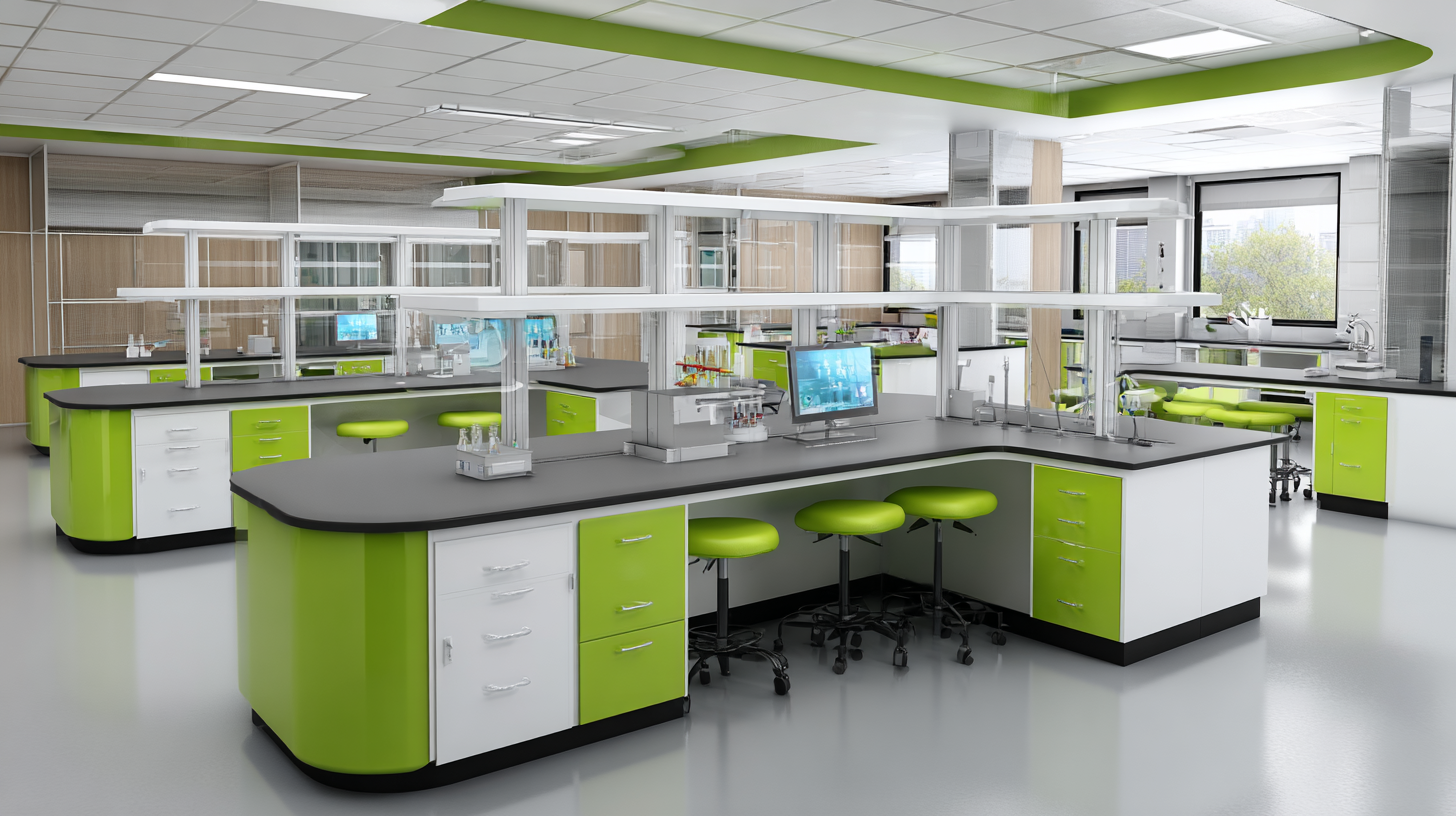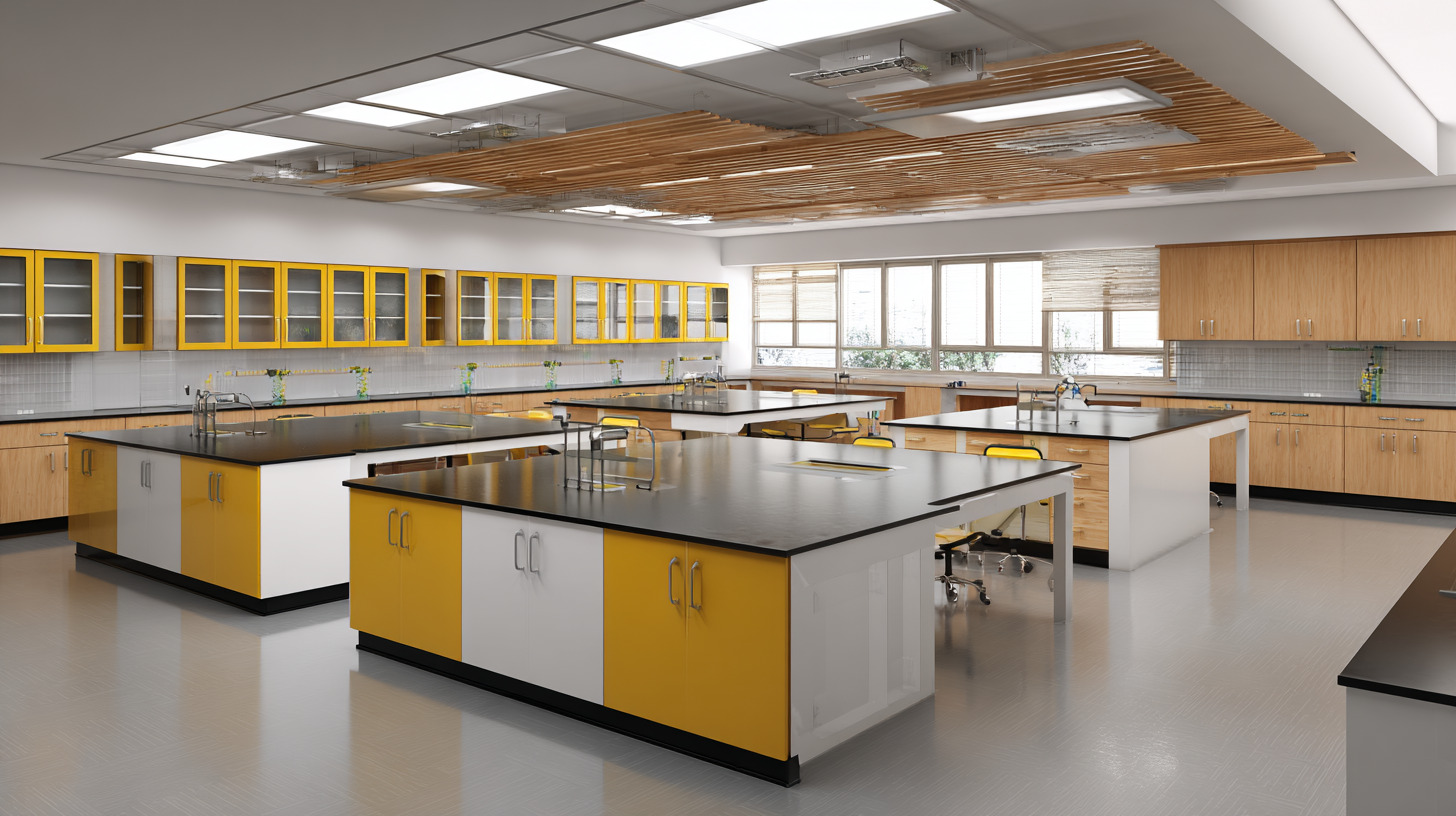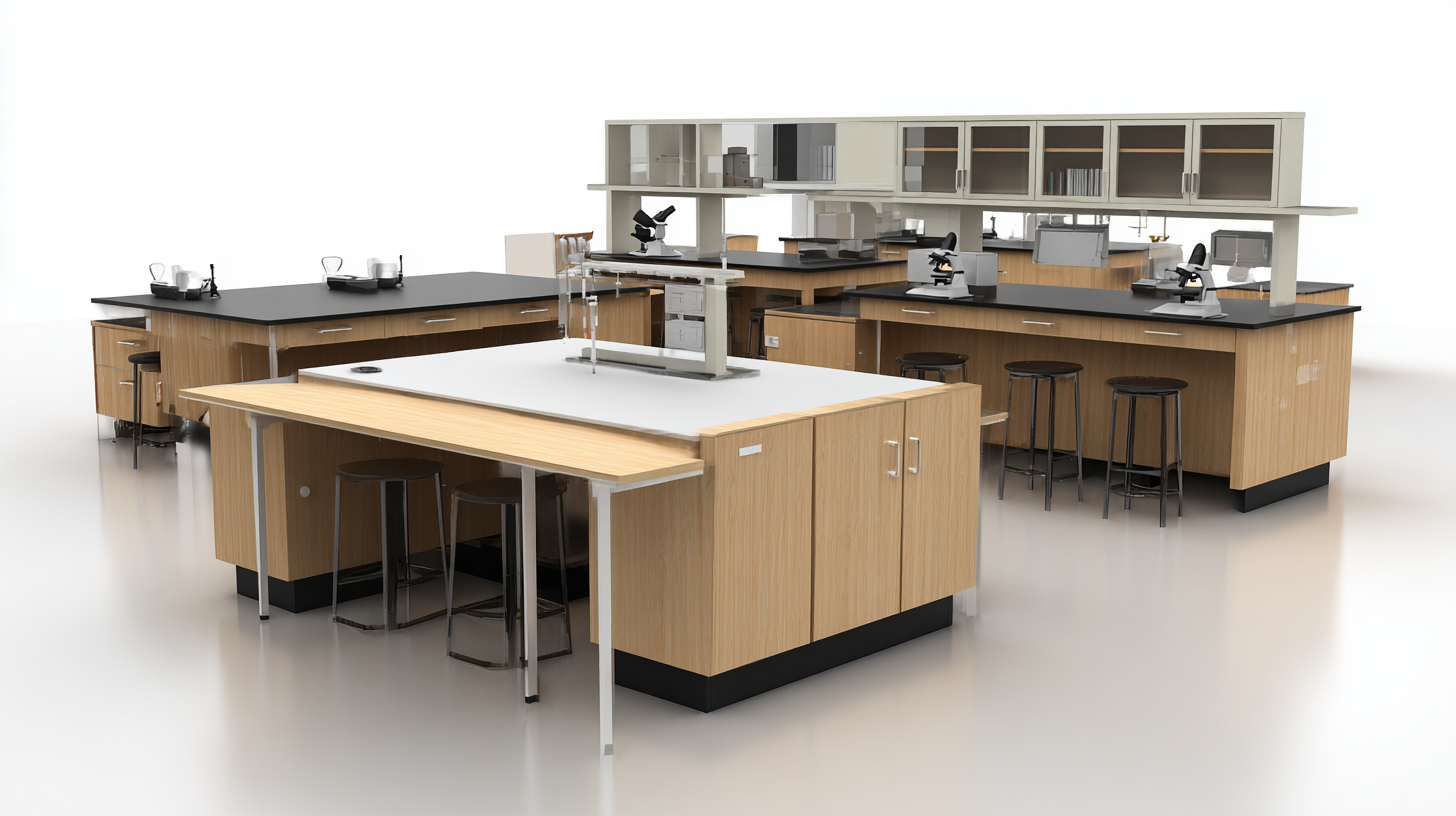In today's rapidly evolving educational landscape, the importance of well-designed school lab furniture cannot be overstated. According to a report from the National Education Association, effective learning environments significantly enhance student performance and engagement, with more than 70% of educators believing that classroom design impacts the learning experience. School lab furniture plays a crucial role in creating an interactive and flexible space that fosters inquiry-based learning and collaboration among students.

Moreover, research indicates that proper ergonomic designs not only support students' physical well-being but also improve their focus and productivity. As educational institutions strive to meet diverse student needs and adapt to innovative teaching methods, investing in high-quality school lab furniture is essential for fostering a stimulating and conducive learning environment. This article provides an ultimate comparison of the best school lab furniture available, highlighting the numerous benefits and considerations involved in selecting the right solutions for your educational needs.
When investing in school lab furniture, one crucial aspect that often gets overlooked is the importance of after-sales service. Purchasing high-quality lab furniture is only the first step; ensuring that the furniture is well-maintained and continues to meet the evolving needs of educational environments is essential. After-sales services, including installation, maintenance, and support, play a pivotal role in maximizing the longevity and utility of lab furniture. Schools that prioritize these services can avoid unexpected costs and disruptions to the educational process, fostering a more effective learning environment.
Another significant advantage of robust after-sales support is the opportunity for customization and enhancements over time. As educational methodologies evolve, so do the requirements for lab spaces. Access to dedicated customer service and technical support enables schools to make adjustments or upgrades to their furniture, ensuring it remains relevant and functional. This flexibility not only enhances the learning experience for students but also empowers educators to experiment with innovative teaching methods. In summary, after-sales service is a critical component that can profoundly impact the value derived from school lab furniture investments, ultimately shaping a more dynamic and supportive educational landscape.
When selecting lab furniture for educational institutions, it’s essential to not only consider the initial purchase price but also the long-term cost-effectiveness of maintenance. Educational lab furniture, often subjected to rigorous use, requires materials that can withstand wear and tear, chemical exposure, and heavy-duty tasks. Investing in high-quality furniture can significantly reduce maintenance costs over time, as durable options minimize the frequency of repairs or replacements.
For instance, opting for furniture made from corrosion-resistant materials or those that are easy to clean can lead to substantial savings. Educational establishments must evaluate the total cost of ownership, factoring in regular upkeep, potential for damage, and the longevity of the furniture. By contrasting various options on the market, educators can identify furniture that not only meets their budget but also offers substantial savings in maintenance, ensuring that resources are allocated efficiently while fostering an optimal learning environment.
This chart evaluates the cost-effectiveness of maintenance for various types of educational lab furniture based on average yearly maintenance costs and initial investment.
When selecting the best school lab furniture, understanding key industry statistics on lifespan and durability is crucial. High-quality lab furniture can significantly affect the longevity of equipment and materials used in educational institutions. Many manufacturers emphasize the importance of durability, often highlighting that well-designed lab furniture can last for decades, even in high-stress environments.
When considering lab furniture for educational needs, here are a few tips to ensure you make informed decisions. First, opt for stainless steel or high-grade materials known for their resistance to corrosion and wear. These materials are essential, especially in settings where hygiene is critical.
Second, evaluate the designs that allow for easy cleaning and maintenance, as this will not only ensure a longer lifespan but also promote a safe learning environment.
Lastly, consider the furniture's ergonomic design. Well-structured lab tables and workstations can help students maintain proper posture and comfort during experiments. Investing in durable and functional furniture will not only enhance the learning experience but also contribute significantly to the overall longevity of your educational resources.
When it comes to maintaining an efficient educational environment, implementing a reliable repair service for school lab furniture is paramount.
According to a report by the National Center for Education Statistics, approximately 75% of schools face challenges related to equipment maintenance, which directly impacts the learning experience. Ensuring that lab furniture, such as desks, lab stations, and storage units, is in peak condition can prevent disruptions and maximize student engagement.

 Investing in high-quality lab furniture is crucial for enhancing student learning and ensuring safety outcomes in educational environments. According to a report by the National Institute for Occupational Safety and Health (NIOSH), ergonomic lab furniture can reduce musculoskeletal injuries by up to 30%. This not only promotes a healthier classroom atmosphere but also enables students to focus better on their experiments and projects, leading to improved academic performance. Well-designed furniture that caters to the specific needs of students and the nature of experiments can foster better engagement and creativity in the learning process.
Investing in high-quality lab furniture is crucial for enhancing student learning and ensuring safety outcomes in educational environments. According to a report by the National Institute for Occupational Safety and Health (NIOSH), ergonomic lab furniture can reduce musculoskeletal injuries by up to 30%. This not only promotes a healthier classroom atmosphere but also enables students to focus better on their experiments and projects, leading to improved academic performance. Well-designed furniture that caters to the specific needs of students and the nature of experiments can foster better engagement and creativity in the learning process.
Tip: When selecting lab furniture, ensure it meets safety standards and promotes proper posture. Look for adjustable tables and chairs to accommodate various body types, which can significantly enhance comfort during extended laboratory sessions.
Furthermore, quality lab furniture contributes to overall safety in the learning environment. According to the American National Standards Institute, compliant lab stations are essential to minimizing risks associated with spills and equipment misuse. Durable materials and thoughtful design, such as rounded edges and easy-to-clean surfaces, help in maintaining a safe workspace.
Tip: Always prioritize furniture that is made from chemical-resistant materials, especially in chemistry labs, to prevent accidents related to spills and reactions.
